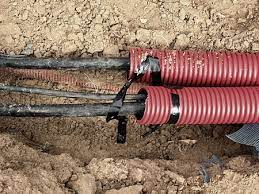Fiber optic cables are crucial components of modern telecommunication networks, providing high-speed data transmission over long distances. However, to ensure their long-term reliability, it’s essential to properly bury them underground.
Burying fiber optic cables is a complex process that involves several factors, including soil conditions, cable depth, and burial methods. Here are some key considerations for ensuring the proper burial of fiber optic cables.
Choose the Right Soil Conditions The soil conditions play a significant role in the longevity of buried fiber optic cables. The soil should be well-drained and free from rocks, stones, and other debris that can cause damage to the cables. The soil’s pH level should also be neutral, as acidic or alkaline soils can corrode the cables over time.
Determine the Optimal Cable Depth The depth at which the cables are buried is critical to their protection from the elements and physical damage. Generally, fiber optic cables should be buried at a depth of at least 18 inches to protect them from being damaged by lawn mowers, rodents, or other factors. In areas with heavy foot or vehicular traffic, the cables should be buried deeper to avoid damage.
Choose the Right Burial Method There are several methods of burying fiber optic cables, including direct burial, conduit burial, and trenching. Direct burial involves burying the cables directly in the ground without any protective conduit. Conduit burial involves placing the cables inside a protective conduit before burying them. Trenching involves digging a trench and placing the cables inside it.
Each of these methods has its advantages and disadvantages. Direct burial is the simplest and most cost-effective, but it provides less protection to the cables. Conduit burial provides better protection but is more expensive and time-consuming. Trenching is the most labor-intensive but provides the best protection to the cables.
Regular Maintenance Even with proper burial, fiber optic cables can still be subject to damage from external factors like moisture and temperature changes. Regular inspections and maintenance can help detect and address any issues before they become serious problems. Inspections can include checking for signs of damage, loose or damaged connectors, or any other issues that may compromise the cable’s performance.
In conclusion, burying fiber optic cables properly is critical to their long-term reliability. The right soil conditions, optimal cable depth, and the right burial method are all factors that must be considered. Regular maintenance is also essential to ensure that the cables remain in good working condition. By following these guidelines, telecommunication companies can ensure that their fiber optic networks remain reliable and efficient for years to come.
Post time: Mar-16-2023
